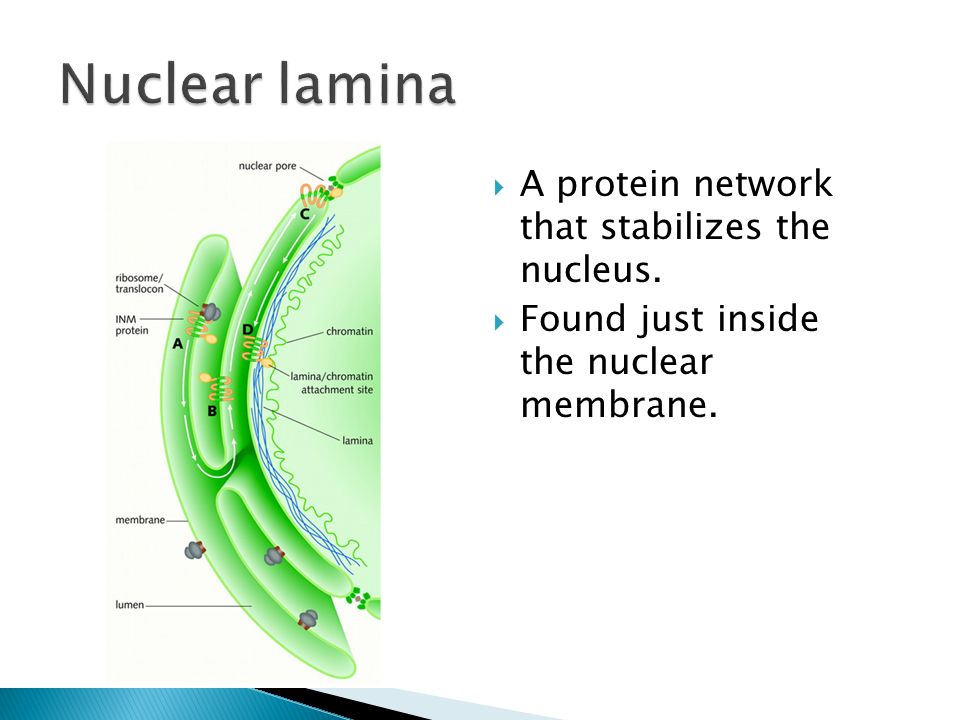What Is Nuclear Lamina Made Of

A layer of proteins that gives strength and support to the nuclear membrane.
What is nuclear lamina made of. The nuclear lamina is attached to the inner nuclear membrane on the nucleoplasm. The nuclear lamina is a structure near the inner nuclear membrane and the peripheral chromatin. Nuclear membrane the nuclear envelope sometimes called a nuclear membrane is a structure made of lipids that has the hereditary material of the eukaryotic cells. It is the most interior component of the nuclear envelope located underneath the inner nuclear membrane.
The nuclear envelope is made up of two lipid bilayer membranes. In mammals there are two major a type lamins lamin a and lamin c which are generated by alternative splicing of the lmna gene. It is composed of lamins which are also present in the nuclear interior and lamin associated proteins. By understanding nuclear membrane function in a cell will help us to become more aware about the important role it plays in functioning of our bodies.
The nuclear lamina also connects to and anchors chromatins which are arranged loosely in dna and protein structure. There are four major kinds of lamins which can be split into two types a and b types. Type a and type b for a review see dechat et al 2008. 215 lamin a lmna is a principle component of the nuclear lamina that functions as a scaffolding molecule to assist in the organization of chromatin.
215 pathogenic mutations in lmna have been identified as causes. Specifically these proteins are located in the nuclear lamina a mesh like layer of intermediate filaments and other proteins that is attached to the inner membrane of the nuclear envelope. The nuclear lamina is a component of the nuclear envelope whose major structural element is a mesh of type v intermediate filament proteins called lamins. An internal network forms the nuclear lamina on the inner nuclear membrane.
Two sets of intermediate filaments provide support for the nuclear envelope. Lamins a and c are supporting scaffolding components of the nuclear envelope which is a structure that surrounds the nucleus in cells. The nuclear lamina is a dense fibrillar network of structural proteins that lines the inner nuclear membrane of eukaryotic cells. An inner nuclear membrane and an outer nuclear membrane.
The nuclear lamina is a protein structure at the nuclear periphery which provides structural support to the nucleus and helps to protect the chromatin figure 1 key figure lamins the major constituent of the nuclear lamina form a dense meshwork of filaments which interact with a large number of binding partners. These membranes are connected to each other by nuclear pores.










































